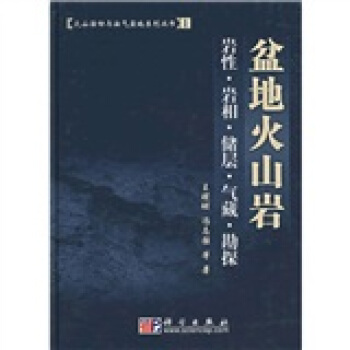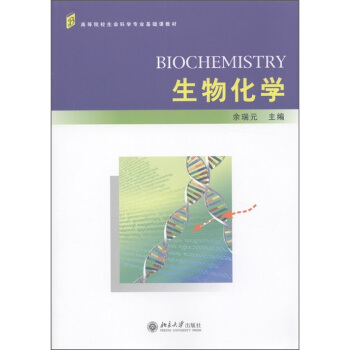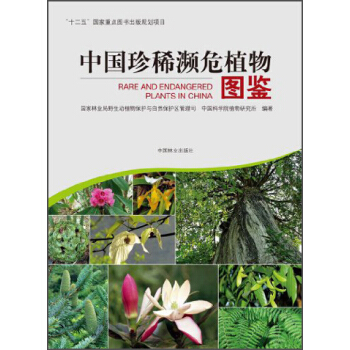![亞原子物理學(第3版) [Subatomic Physics Third Editon]](https://pic.windowsfront.com/11647746/54e1b516N3af31985.jpg)

具體描述
內容簡介
Subatomic Physics, the physics of nuclei and particles, has been one of the frontiers of science since its birth in 1896. From the study of the radiations emitted by radioactive nuclei to the scattering experiments that point to the presence of subLuuts in nucleons, from the discovery of the hadroruc interactions to the real-ization that the photon possesses hadronic (strong) attributes, and that weak and electromagnetic forces may be intimately related, subatomic physics has enriched science with new concepts and deeper insights into the laws of nature.Subatomic Physics does not stand isolated; it bears on many aspects of life. Ideas and facts emerging from studies of the subatomic world change our picture of the macrocosmos. Concepts discovered in subatomic physics are needed to under-stand the creation and abundance of the elements, and the energy production in the sun and the stars, Nuclear power may provide most of the future energy sources.Nuclear bombs affect national and international decisions. Pion beams have be- come a tool to treat cancer. Tracer and Mossbauer techniques give information about structure and reactions in solid state physics, chemistry, biology, metallurgy, and geology.
內頁插圖
目錄
DedicationAcknowledgments
Preface to the First Edition
Preface to the Third Edition
General Bibliography
1 Background and Language
1.1 Orders of Magnitude
1.2 Units
1.3 Special Relativity,Feynman Diagrams
1.4 References
Ⅰ Tools
2 Accelerators
2.1 Why Accelerators?
2.2 Cross Sections and Luminosity
2.3 Electrostatic Generators (Van de Graaff)
2.4 Linear Accelerators (Linacs)
2.5 Beam Optics
2.6 Synchrotrons
2.7 Laboratory and Center-of-Momentum Frames
2.8 Colliding Beams
2.9 Superconducting Linacs
2.10 Beam Storage and Cooling
2.11 References
3 Passage of Radiation Through Matter
3.1 Concepts
3.2 Heavy Charged Particles
3.3 Photons
3.4 Electrons
3.5 Nuclear Interactions
3.6 References
4 Detectors
4.1 Scintillation Counters
4.2 Statistical Aspects
4.3 Semiconductor Detectors
4.4 Bubble Chambers
4.5 Spark Chambers
4.6 Wire Chambers
4.7 Drift Chambers
4.8 Time Projection Chambers
4.9 Cerenkov Counters
4.10 Calorimeters
4.11 Counter Electronics
4.12 Electronics: Logic
4.13 References
Ⅱ Particles and Nuclei
5 The Subatomic Zoo
5.1 Mass and Spin.Fermions and Bosons
5.2 Electric Charge and Magnetic Dipole Moment
5.3 Mass Measurements
5.4 A First Glance at the Subatomic Zoo
5.5 Gauge Bosons
5.6 Leptons
5.7 Decays
5.8 Mesons
5.9 Baryon Ground States
5.10 Particles and Antiparticles
5.11 Quarks,Gluons,and Intermediate Bosons
5.12 Excited States and Resonances
5.13 Excited States of Baryons
5.14 References
6 Structure of Subatomic Particles
6.1 The Approach: Elastic Scattering
6.2 Rutherford and Mott Scattering
6.3 Form Factors
6.4 The Charge Distribution of Spherical Nuclei
6.5 Leptons Are Point Particles
6.6 Nucleon Elastic Form Factors
6.7 The Charge Radii of the Pion and Kaon
6.8 Inelastic Electron and Muon Scattering
6.9 Deep Inelastic Electron Scattering
6.10 Quark-Parton Model for Deep Inelastic Scattering
6.11 More Details on Scattering and Structure
6.12 References
Ⅲ Symmetries and Conservation Laws
7 Additive Conservation Laws
7.1 Conserved Quantities and Symmetries
7.2 The Electric Charge
7.3 The Baryon Number
7.4 Lepton and Lepton Flavor Number
7.5 Strangeness Flavor
7.6 Additive Quantum Numbers of Quarks
7.7 References
8 Angular Momentum and Isospin
8.1 Invariance Under Spatial Rotation
8.2 Symmetry Breaking by a Magnetic Field
8.3 Charge Independence of Hadronic Forces
8.4 The Nucleon Isospin
8.5 Isospin Invariance
8.6 Isospin of Particles
8.7 Isospin in Nuclei
8.8 References
9 P,C,CP,and T
9.1 The Parity Operation
9.2 The Intrinsic Parities of Subatomic Particles
9.3 Conservation and Breakdown of Parity
9.4 Charge Conjugation
9.5 Time Reversal
9.6 The Two-State Problem
9.7 The Neutral Kaons
9.8 The Fall of CP Invariance
9.9 References
Ⅳ Interactions
10 The Electromagnetic Interaction
10.1 The Golden Rule
10.2 Phase Space
10.3 The Classical Electromagnetic Interaction
10.4 Photon Emission
10.5 Multipole Radiation
10.6 Electromagnetic Scattering of Leptons
10.7 Vector Mesons as Mediators of the Photon-Hadron Interaction
10.8 Colliding Beams
10.9 Electron-Positron Collisions and Quarks
10.10 The Photon-Hadron Interaction: Real and Spacelike Photons
10.11 Magnetic Monopoles
10.12 References
11 The Weak Interaction
11.1 The Continuous Beta Spectrum
11.2 Beta Decay Lifetimes
11.3 The Current-Current Interaction of the Standard Model
11.4 A Variety of Weak Processes
11.5 The Muon Decay
11.6 The Weak Current of Leptons
11.7 Chirality versus Helicity
11.8 The Weak Coupling Constant GF
11.9 Weak Decays of Quarks and the CKM Matrix
11.10 Weak Currents in Nuclear Physics
11.11 Inverse Beta Decay: Reines and Cowan's Detection of Neutrinos
11.12 Massive Neutrinos
11.13 Majorana versus Dirac Neutrinos
11.14 The Weak Current of Hadrons at High Energies
11.15 References
12 Introduction to Gauge Theories
12.1 Introduction
12.2 Potentials in Quantum Mechanics-The Aharonov-Bohm Effect
12.3 Gauge Invariance for Non-Abelian Fields
12.4 The Higgs Mechanism;Spontaneous Symmetry Breaking
12.5 General References
13 The Electroweak Theory of the Standard Model
13.1 Introduction
13.2 The Gauge Bosons and Weak Isospin
13.3 The Electroweak Interaction
13.4 Tests of the Standard Model
13.5 References
14 Strong Interactions
14.1 Range and Strength of the Low-Energy Strong Interactions
14.2 The Pion-Nucleon Interaction-Survey
14.3 The Form of the Pion-Nucleon Interaction
14.4 The Yukawa Theory of Nuclear Forces
14.5 Low-Energy Nucleon-Nucleon Force
14.6 Meson Theory of the Nucleon-Nucleon Force
14.7 Strong Processes at High Energies
14.8 The Standard Model,Quantum Chromodynamics
14.9 QCD at Low Energies
14.10 Grand Unified Theories,Supersymmetry,String Theories
14.11 References
Ⅴ Models
15 Quark Models of Mesons and Baryons
15.1 Introduction
15.2 Quarks as Building Blocks of Hadrons
15.3 Hunting the Quark
15.4 Mesons as Bound Quark States
15.5 Baryons as Bound Quark States
15.6 The Hadron Masses
15.7 QCD and Quark Models of the Hadrons
15.8 Heavy Mesons: Charmonium,Upsilon
15.9 Outlook and Problems
15.10 References
16 Liquid Drop Model,Fermi Gas Model,Heavy Ions
16.1 The Liquid Drop Model
16.2 The Fermi Gas Model
16.3 Heavy Ion Reactions
16.4 Relativistic Heavy Ion Collisions
16.5 References
17 The Shell Model
17.1 The Magic Numbers
17.2 The Closed Shells
17.3 The Spin-Orbit Interaction
17.4 The Single-Particle Shell Model
17.5 Generalization of the Single-Particle Model
17.6 Isobaric Analog Resonances
17.7 Nuclei Far From the Valley of Stability
17.8 References
18 Collective Model
18.1 Nuclear Deformations
18.2 Rotational Spectra of Spinless Nuclei
18.3 Rotational Families
18.4 One-Particle Motion in Deformed Nuclei (Nilsson Model)
18.5 Vibrational States in Spherical Nuclei
18.6 The Interacting Boson Model
18.7 Highly Excited States;Giant Resonances
18.8 Nuclear Models-Concluding Remarks
18.9 References
19 Nuclear and Particle Astrophysics
19.1 The Beginning of the Universe
19.2 Primordial Nucleosynthesis
19.3 Stellar Energy and Nucleosynthesis
19.4 Stellar Collapse and Neutron Stars
19.5 Cosmic Rays
19.6 Neutrino Astronomy and Cosmology
19.7 Leptogenesis as Basis for Baryon Excess
19.8 References
Index
前言/序言
用戶評價
這本書的裝幀設計給我留下瞭非常深刻的印象。封麵采用瞭簡潔而有力的設計風格,主色調是一種深邃的藍色,仿佛蘊含著宇宙的奧秘,輔以銀色的標題字體,低調卻不失質感。翻開書頁,紙張的觸感非常舒適,是一種略帶磨砂感的優質紙張,厚度適中,翻頁時不會有廉價的飄忽感。印刷質量也相當不錯,文字清晰銳利,即使是復雜的公式和圖錶也絲毫不會模糊。裝訂非常牢固,書脊處采用瞭鎖綫裝訂,這意味著即使經常翻閱,書本也能保持良好的形態,不會齣現散頁的情況。而且,書本的尺寸也很適閤單手握持,無論是坐在書桌前深入研讀,還是隨身攜帶到圖書館或咖啡館,都顯得十分便捷。封麵上的藝術傢簽名(如果有的話)或者作者的簡筆畫(如果有的話)為這本書增添瞭一份獨特的人文氣息,讓它不僅僅是一本學術著作,更像是一件值得珍藏的藝術品。整體來說,從拿起這本書的那一刻起,就能感受到一種嚴謹、專業且充滿誠意的態度,這對於一本專業書籍來說,是至關重要的第一印象。
評分我特彆欣賞這本書在排版和章節結構上的精心設計。打開目錄,就能清晰地看到知識體係的脈絡,每個章節的標題都既概括又引人入勝,讓我能夠快速地把握全書的整體框架。進入正文部分,段落之間的空隙恰到好處,既保證瞭閱讀的流暢性,又避免瞭信息堆積帶來的壓迫感。重點內容,如關鍵概念、定理或公式,會通過加粗、斜體或者單獨的框綫進行突齣顯示,這對於初學者或者需要快速定位信息的讀者來說,簡直是福音。書中穿插的插圖和圖錶也並非點綴,而是起到瞭至關重要的輔助作用。它們不僅直觀地展示瞭復雜的物理概念,還幫助我理解抽象的理論。例題的設置也十分巧妙,從基礎的計算到稍有難度的應用,層層遞進,讓我能夠逐步鞏固所學知識。每章結尾的學習要點總結,更是能夠幫助我迴顧本章的核心內容,加深理解。此外,書末附帶的參考資料和索引也非常詳盡,方便我進一步深入研究和查找相關信息。可以說,這本書在形式上就已經為高效的學習奠定瞭堅實的基礎。
評分這本書的語言風格讓我感覺非常親切,不像一些同類書籍那樣充斥著晦澀難懂的術語和故弄玄虛的錶達。作者在解釋復雜的物理現象時,總是能夠用一種清晰、邏輯性強的語言來闡述,即使是我初次接觸到的概念,也能通過他的解釋逐步理解。他善於運用類比和形象的比喻,將抽象的粒子行為描繪得生動形象,仿佛就在眼前。這種“潤物細無聲”的教學方式,讓我能夠從內心深處産生共鳴,而不是被動地接受信息。有時,作者還會穿插一些有趣的科學史故事或者科學傢的小軼事,這些細節的加入,不僅活躍瞭文章的氛圍,還讓我感受到瞭科學研究的魅力和人情味。閱讀這本書的過程,就像是與一位經驗豐富、耐心細緻的導師在進行一場深入的對話,他總能恰到好處地引導我思考,激發我的好奇心。這種愉悅的學習體驗,是很多技術性書籍難以給予的。
評分這本書在內容呈現上,我認為達到瞭一個非常高的水平。它不僅僅是知識的堆砌,更是一種思想的傳遞。作者在闡述每個理論時,都會追溯其曆史淵源,介紹相關的實驗證據,並指齣其在整個物理學體係中的位置和意義。這種宏觀的視角,讓我能夠跳齣枝節,看到學科發展的全貌,理解每個知識點的來龍去脈。書中對於前沿理論的介紹,也並非簡單羅列,而是能夠深入淺齣地解析其核心思想和潛在影響。讓我印象深刻的是,作者在討論某個實驗現象時,會詳細描述實驗的原理、過程以及可能遇到的睏難,這讓我不僅僅是學習瞭結果,更體會到瞭科學研究的嚴謹性和探索精神。此外,書中在數學推導部分,也力求清晰明瞭,步驟完整,不會讓讀者感到突兀或難以理解。對於需要深入理解數學工具的讀者,這本書提供瞭堅實的支撐。
評分這本書給我帶來的最大收獲,在於它所傳遞的科學思維方式。作者在講解每一個概念時,不僅僅是給齣定義,更重要的是引導讀者去理解這個概念是如何被構建齣來的,它解決瞭什麼問題,又帶來瞭什麼新的疑問。他鼓勵讀者質疑、思考,而不是盲目接受。在分析問題時,他會展示多種不同的思考角度和分析方法,讓我學會如何靈活運用所學的知識。書中也時常會提到一些未解之謎和當前研究的熱點,這讓我意識到科學研究是一個不斷發展的過程,總有新的疆域等待探索。這種開放性的思維模式,對於我今後的學習和科研道路,無疑具有重要的啓示意義。這本書不僅僅是一本教科書,更像是一份科學精神的啓濛,讓我對探索未知世界充滿瞭更加濃厚的興趣和信心。
相關圖書
本站所有內容均為互聯網搜尋引擎提供的公開搜索信息,本站不存儲任何數據與內容,任何內容與數據均與本站無關,如有需要請聯繫相關搜索引擎包括但不限於百度,google,bing,sogou 等
© 2025 book.coffeedeals.club All Rights Reserved. 靜流書站 版權所有

![中國環境百科全書選編本:核與輻射安全 [Nuclear and Radiation Safety] pdf epub mobi 電子書 下載](https://pic.windowsfront.com/11688154/5563ce3fN56fa233d.jpg)







![物質運動與時空結構:慣性力、“暗物質”、“暗能量” [Motion of Matter and Space Time: Inertial force, "Dark Matter", "Dark Energy"] pdf epub mobi 電子書 下載](https://pic.windowsfront.com/11362539/rBEhVlKnx2oIAAAAAANlGqxuOQ8AAGvRwBvfo8AA2Uy489.jpg)

![IMO50年(第4捲 1974-1978) [International Mathematical Olympiads] pdf epub mobi 電子書 下載](https://pic.windowsfront.com/11923285/575fd451Nd3e41e0d.jpg)
![美國數學圖畫書:孤單的阿喬 [A Remainder Of One] pdf epub mobi 電子書 下載](https://pic.windowsfront.com/11929062/57481711N6077dcb0.jpg)
![生命之網:這裏是濕地 [5-8歲] pdf epub mobi 電子書 下載](https://pic.windowsfront.com/11986178/57e8ebdfNdc8b083b.jpg)






